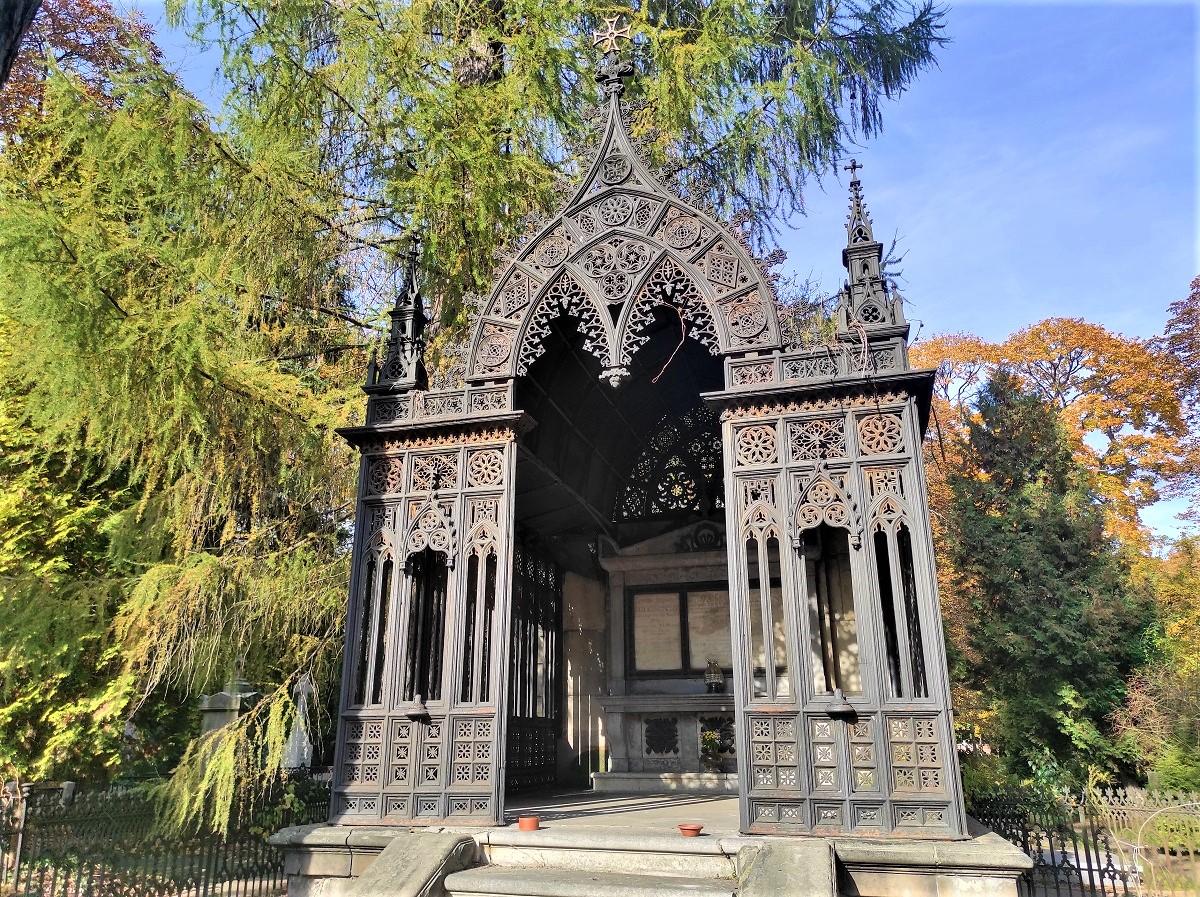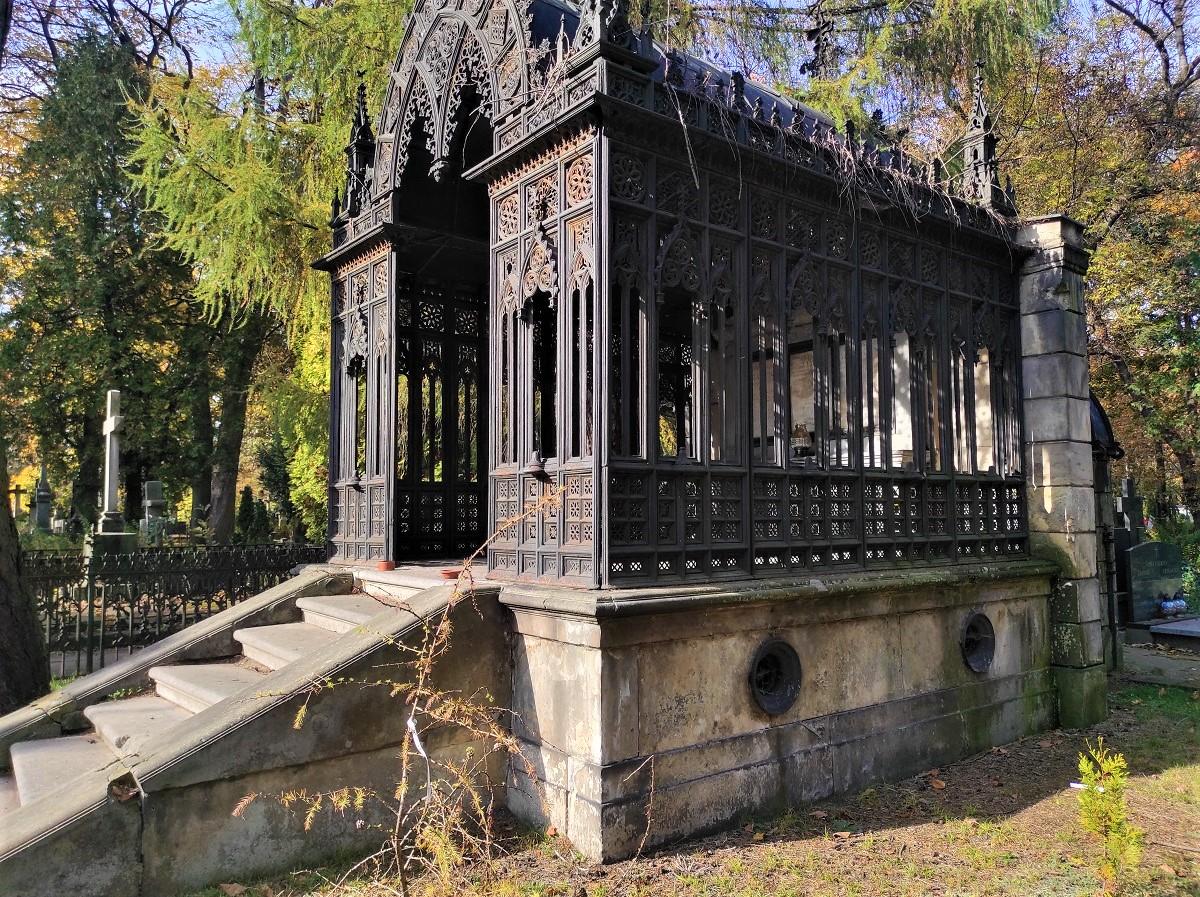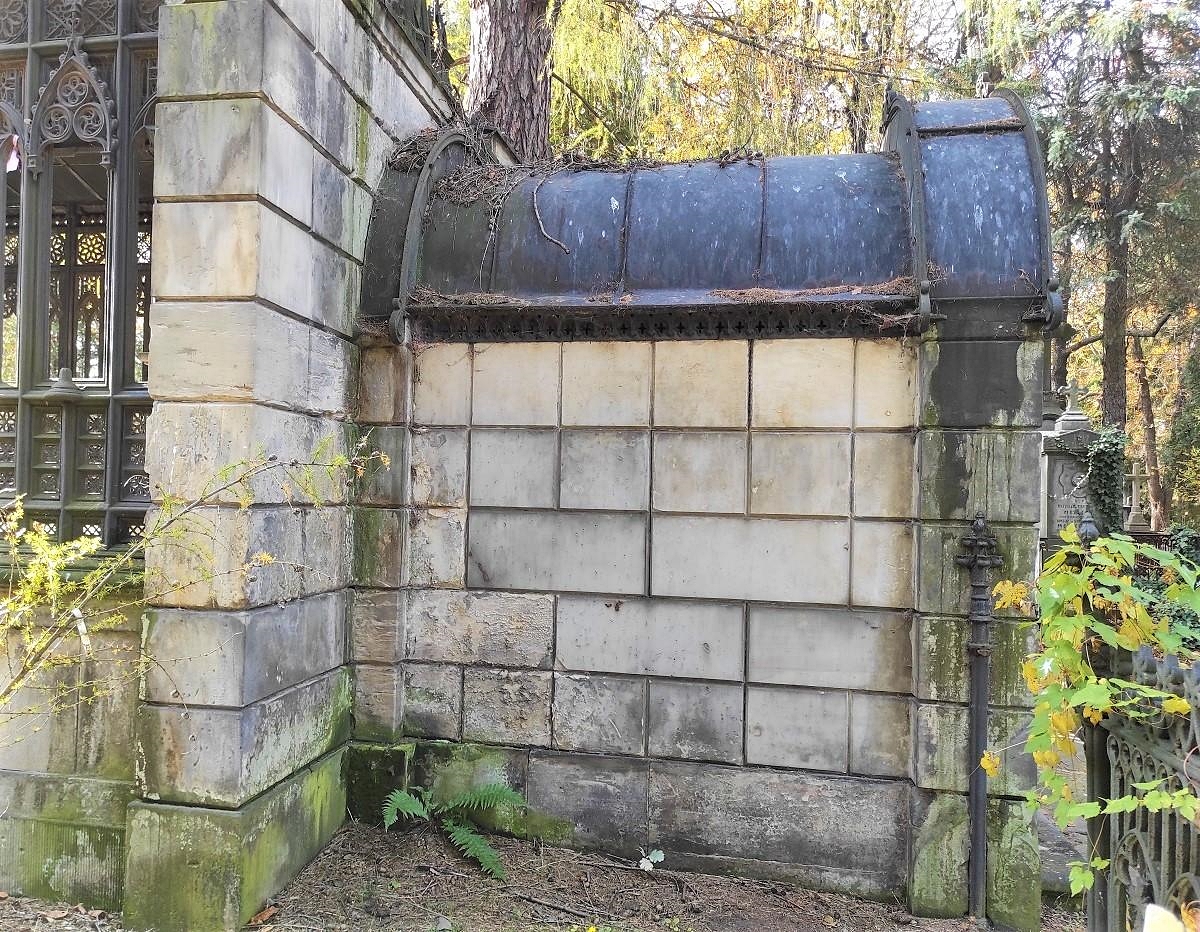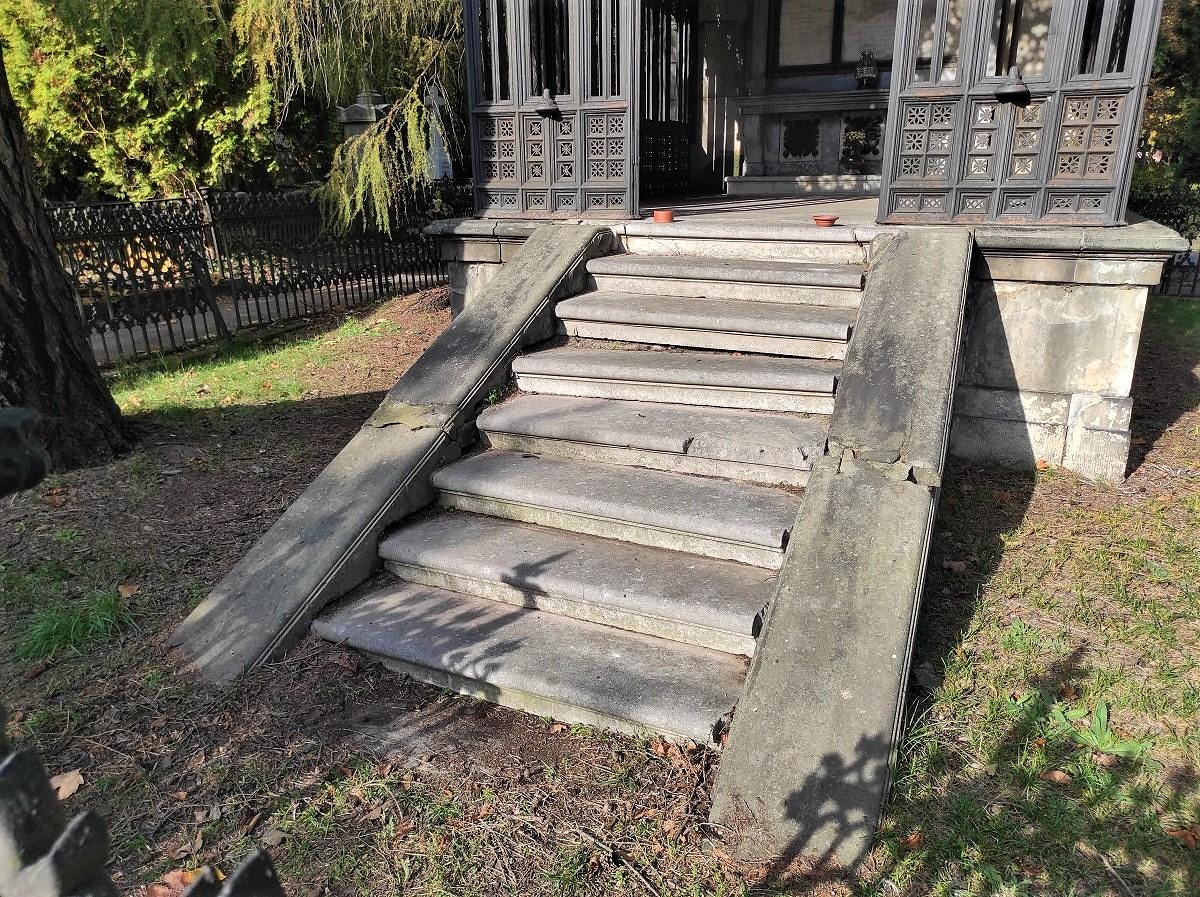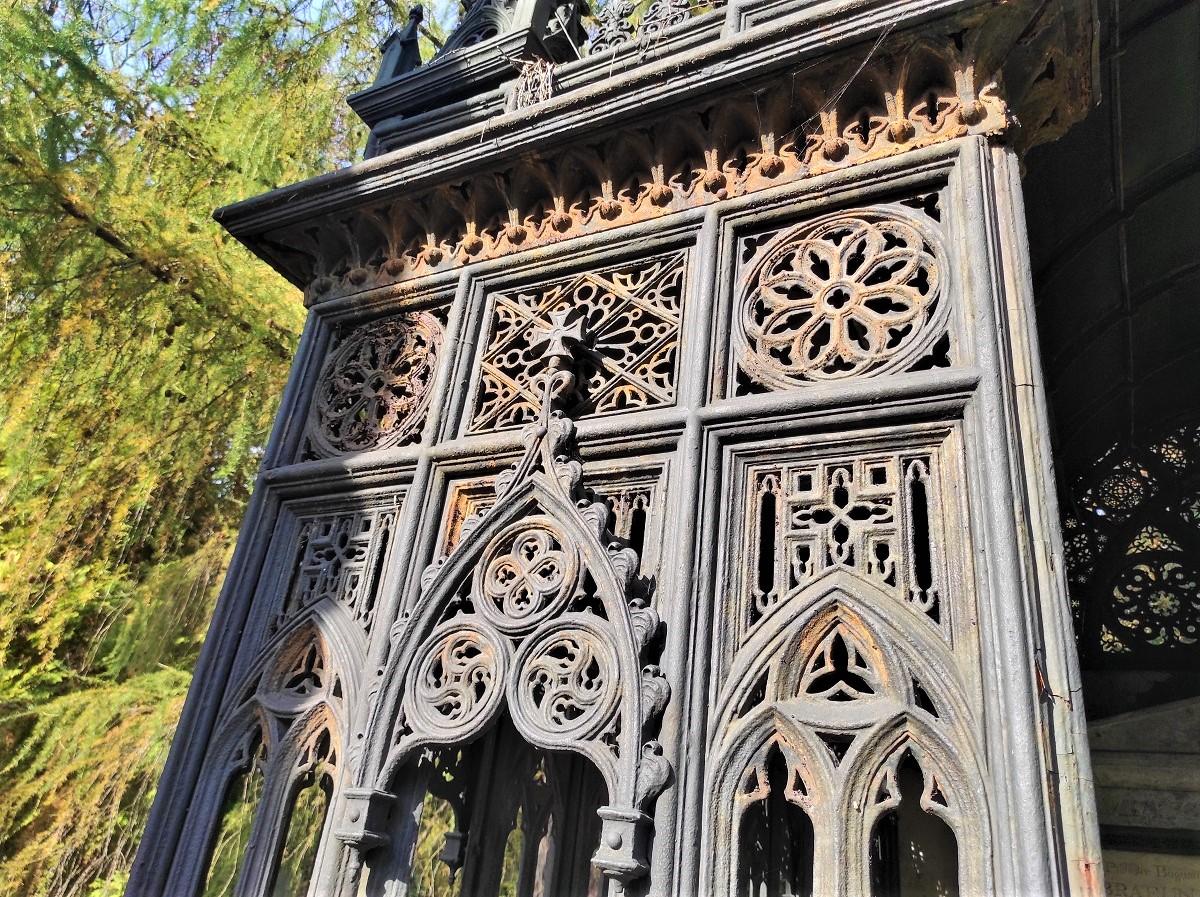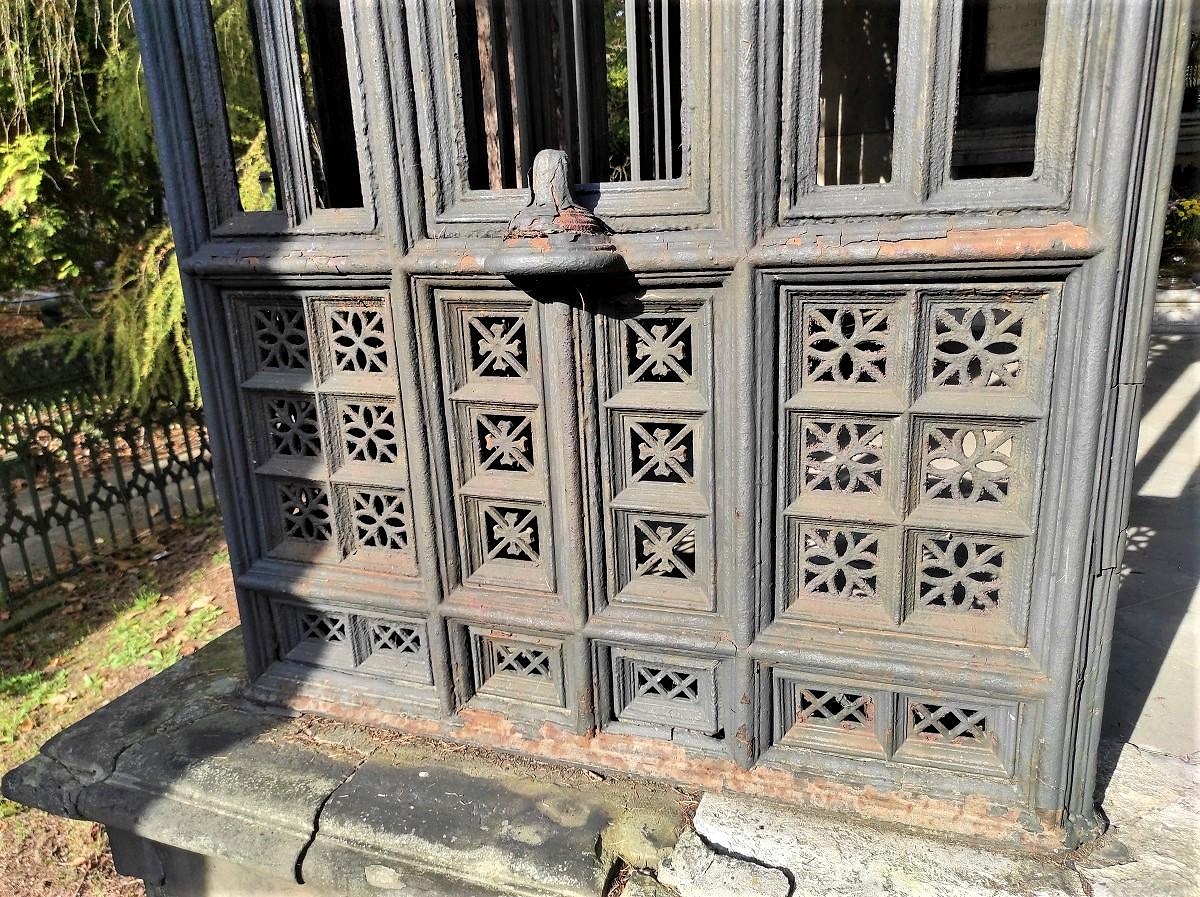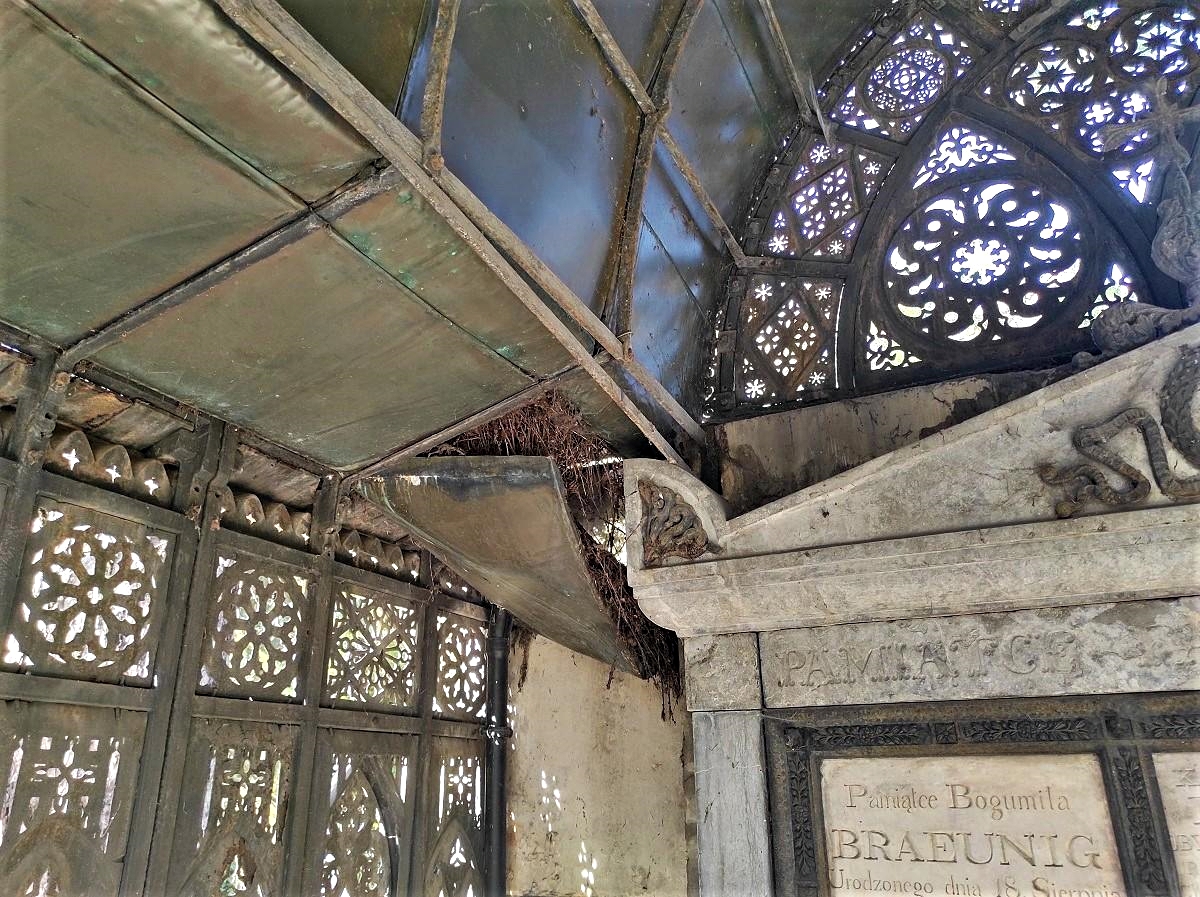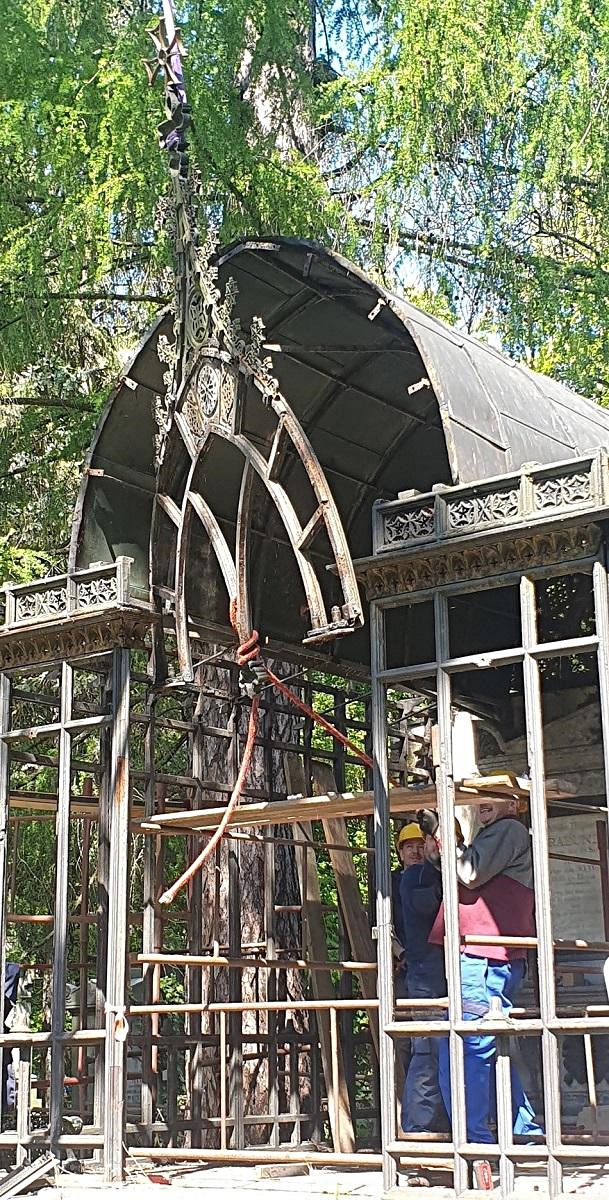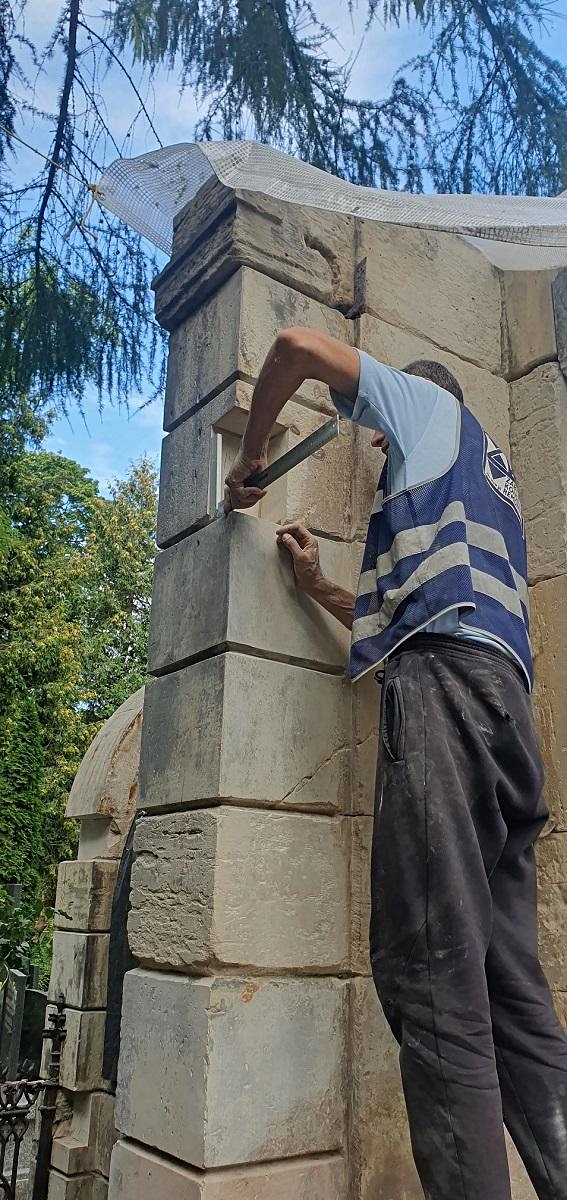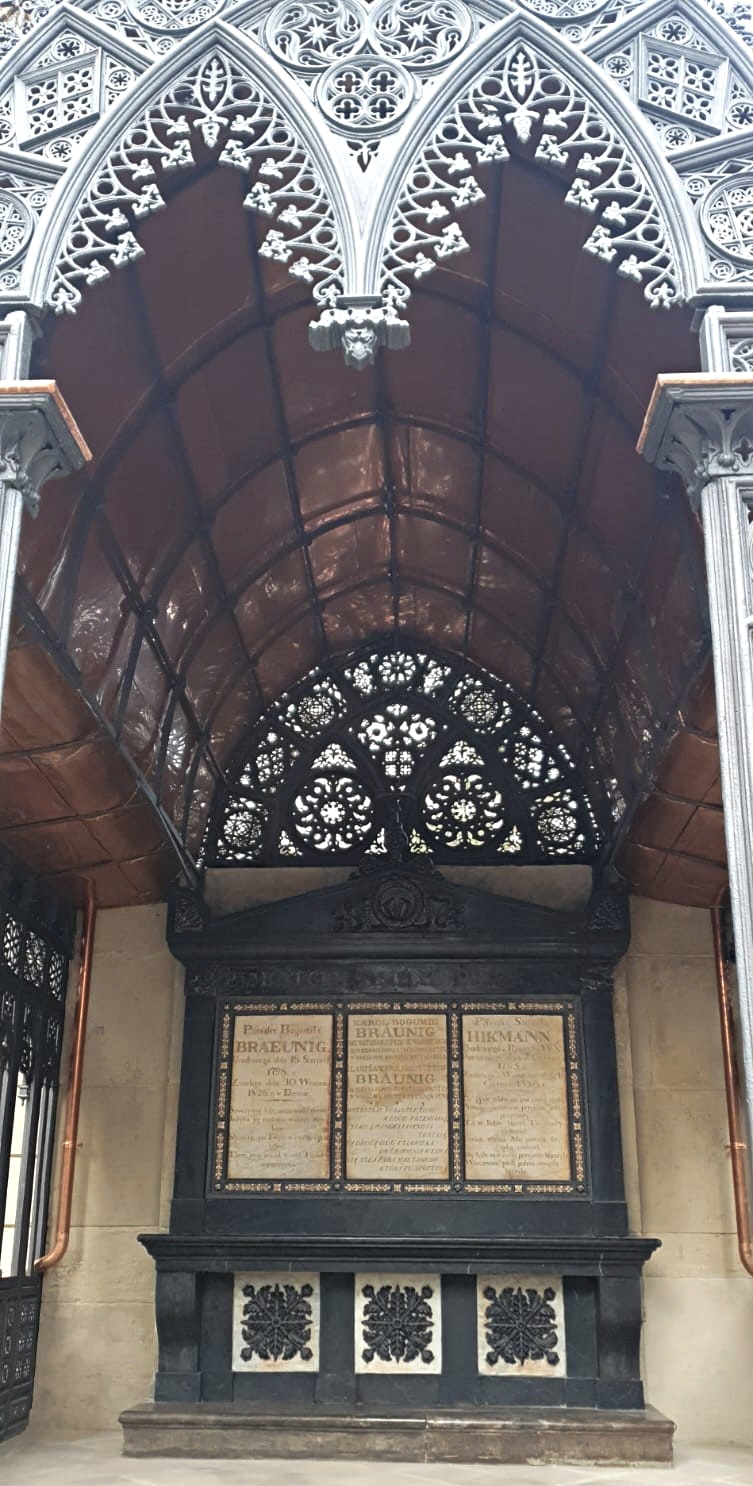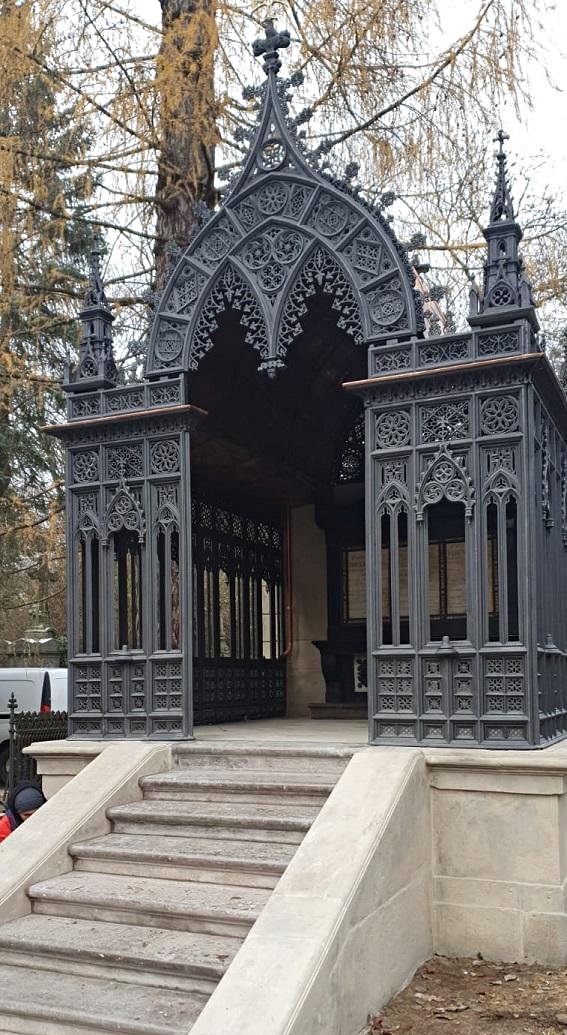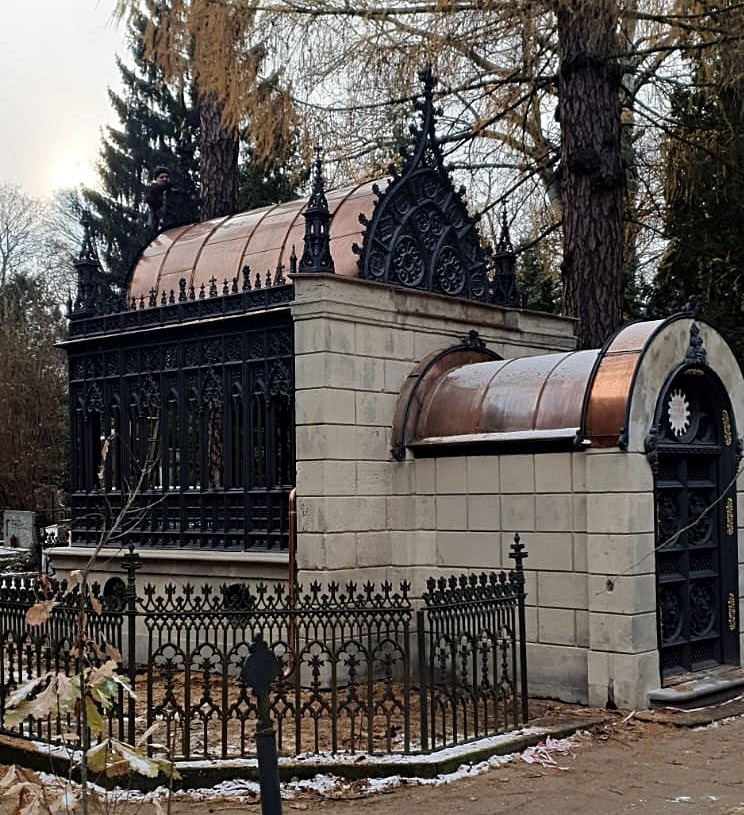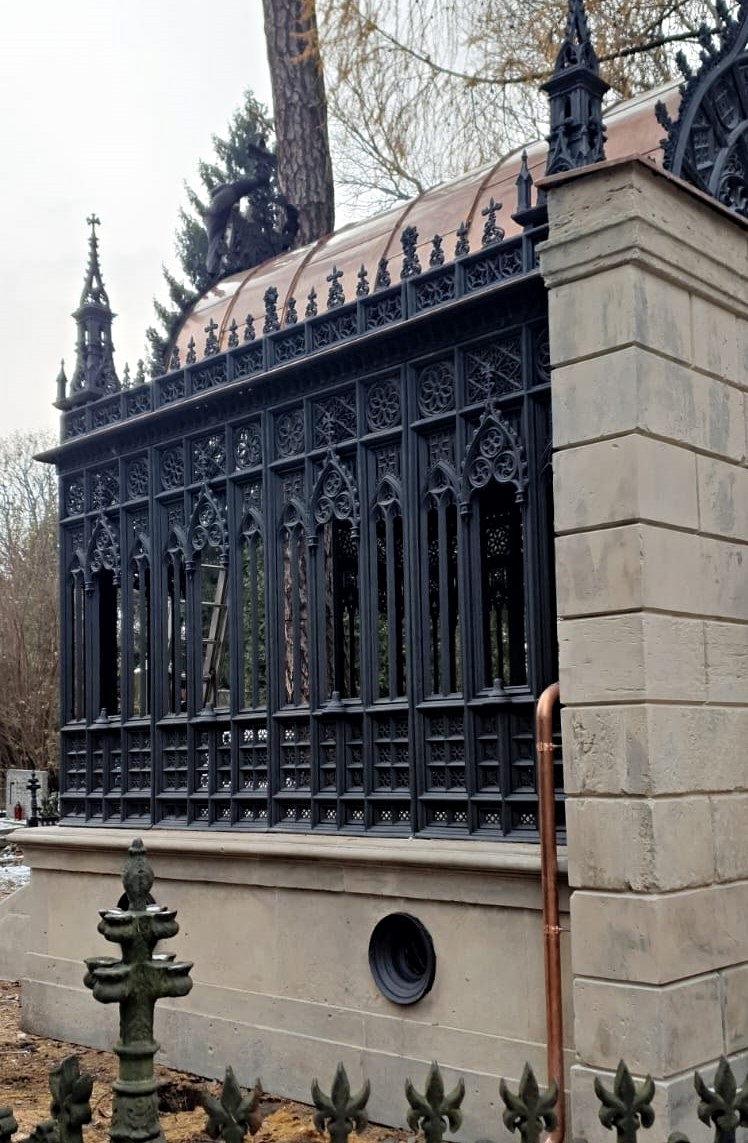The Braeunig family burial chapel in the Evangelical-Augsburg Cemetery on Młynarska Street in Warsaw once again looks as it did in the early 19th century. This was a real conservation challenge. Crumbling and corroded cast iron, a degraded stone structure, significant cavities and harmful build-ups. During the works, everything was remedied.
The craftsmanship of the cast-iron chapel funded by the widow of Karol Bogumil Braeunig was already admired by Varsovians of the time. It was the first such innovative cast-iron construction in the Kingdom of Poland. The career of Karol Bogumił Braeunig was a typical career of a merchant, who made a lot of money in the wine trade. The wine warehouse he ran, together with Samuel Hikman, supplied, among others, the royal court. He discounted his wealth by holding social functions, mainly connected with the Warsaw Evangelical Augsburg Community and trade societies. He also acquired the Belawa estate on the Jeziorna River. For the last years of his life, he was a member of the 9-member company managing the finances of the National Theatre. After the deaths of her husband and son, Clarissa Braeunig was involved in the management of the Belawa estate and philanthropic activities. The neo-Gothic monument in the cemetery on Młynarska Street, founded by her, is one of the most interesting cast-iron monuments from the early nineteenth century.
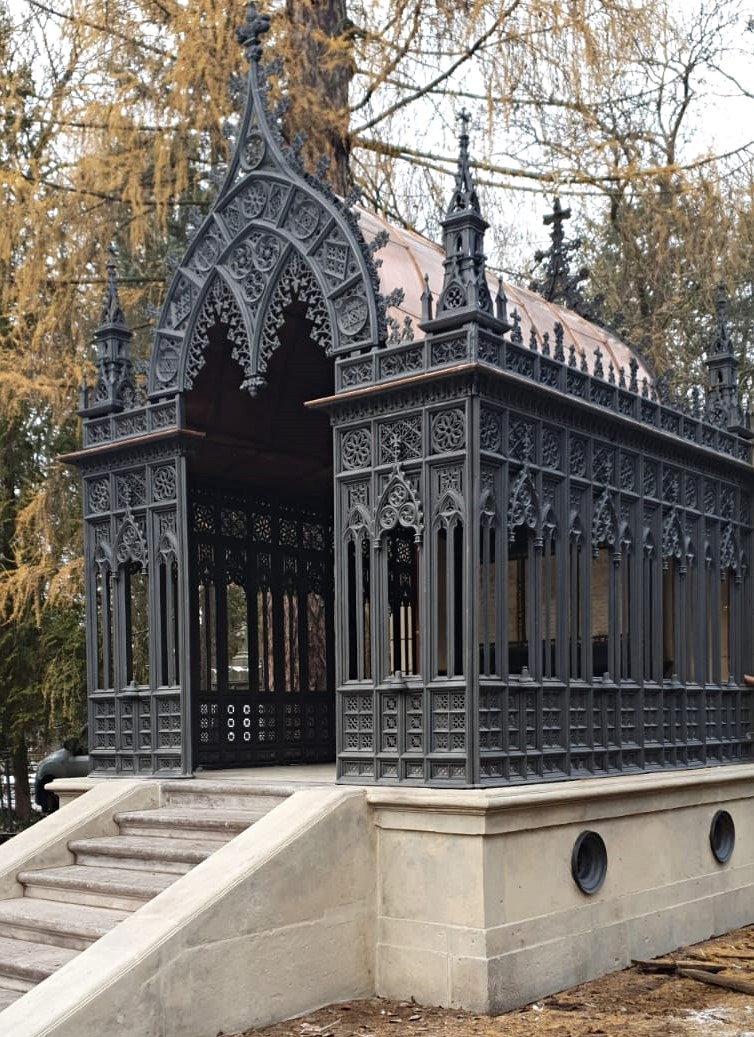
All the cast iron and stone elements of the chapel underwent conservation. The cast iron was in poor condition, corroded and very brittle in places. Various cleaning tools and methods were used to remove the build-up and corrosion: scrapers, scalpels, brushes, chemicals. Finally, it was protected against corrosion and covered with graphite paint. Work on most of the cast iron elements took place in the workshop. Only the door frame of the northern section was worked on site, due to the high risk of damaging the stone structure during removal.
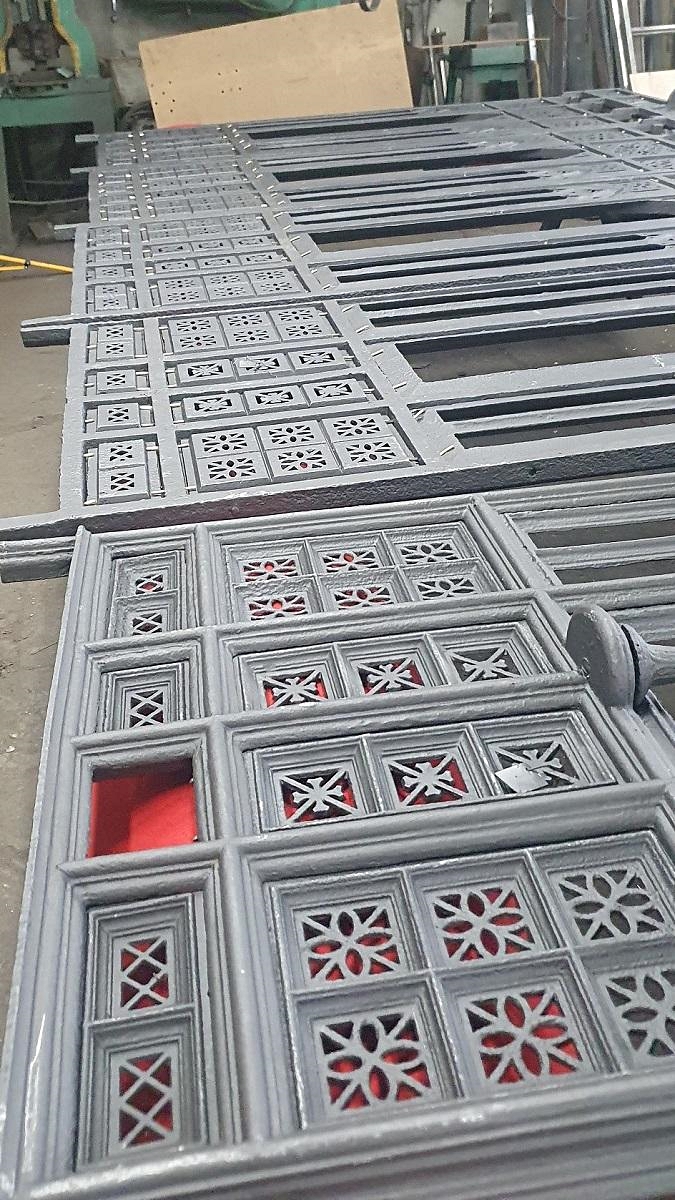
The stone surfaces were cleaned of mineral and organic build-up, and secondary, inappropriate, cement restorations were removed. Small defects in the stone were filled with conservation putty and larger defects with stone flecks. Finally, the entire surface was strengthened and hydrophobised. The lettering of the plaques inside the chapel has also been made legible. The copper sheet roofing and flashings are also new.
The city’s subsidy for these works amounted to PLN 300,000. The Evangelical-Augsburg Parish of the Holy Trinity is planning to continue work on the chapel this year. The damp proofing of the stairs and the maintenance of the fence remain to be carried out.
Source: um.warszawa.pl
Read also: Metamorphosis | Monument | History | Sacral architecture | Warsaw | Metal
Subject: Braeunig Family burial chapel looks again as it did in the early 19th century


